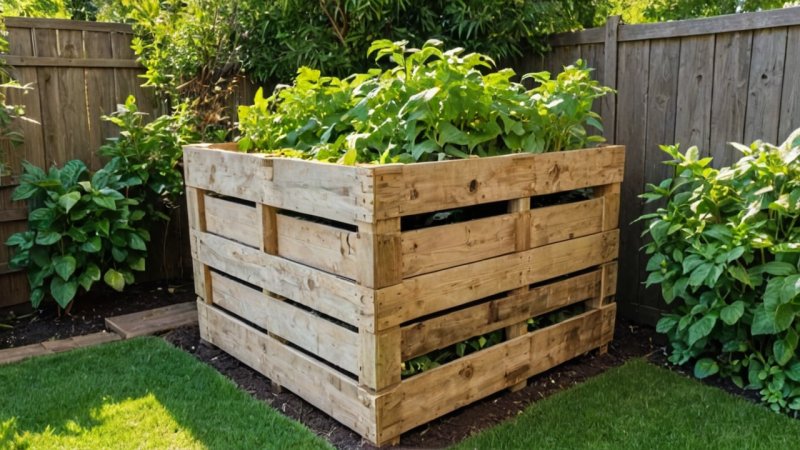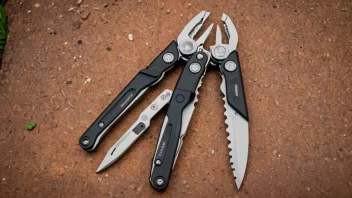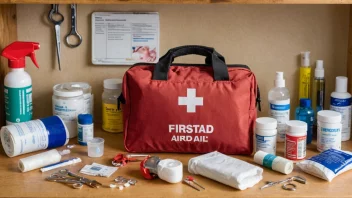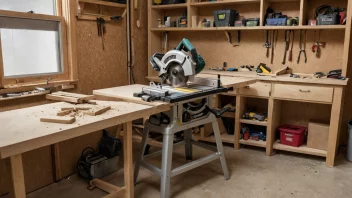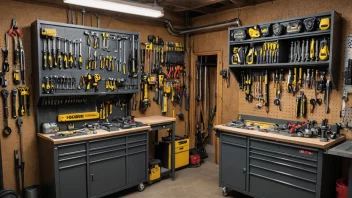Creating a DIY compost bin is not only a sustainable way to recycle kitchen and garden waste but also a rewarding project that can enhance your outdoor space. Composting provides a rich, nutrient-dense soil amendment that can improve garden health and reduce the need for chemical fertilizers. This article will guide you through the process of building your own compost bin, including the tools you'll need, the materials to consider, and tips on maintaining your compost pile for optimal results.
Why Composting Is Important
Composting has numerous environmental benefits. It helps reduce landfill waste, cuts down on greenhouse gas emissions, and returns valuable nutrients to the soil. By composting, you can also save money on fertilizers while promoting a healthier ecosystem in your garden. The composting process transforms organic waste into a valuable resource, helping to support plant growth and improve soil quality.
Choosing the Right Location
Before you start building your compost bin, selecting the right location is crucial. Here are some factors to consider:
- Accessibility: Choose a spot that is easily accessible for adding waste and turning the pile.
- Sunlight: Ideally, your compost bin should receive some sunlight, which helps to heat the pile and speed up decomposition.
- Drainage: Ensure the area has good drainage to avoid waterlogging, which can slow down the composting process.
- Proximity to the kitchen: Place your compost bin close to your kitchen for convenience when disposing of food scraps.
Tools You'll Need
Creating a DIY compost bin requires just a few essential tools. Here’s a list of what you will need:
- Shovel or spade: For turning the compost and moving materials.
- Garden fork: Useful for aerating the compost pile.
- Hand trowel: For small jobs, especially when adding kitchen scraps.
- Measuring tape: To ensure your bin is built to the right size.
- Drill: If you are using wood to construct your bin, a drill will be necessary for making holes and assembling parts.
- Saw: A handsaw or circular saw will help cut wood to the desired lengths.
Materials for Building Your Compost Bin
When it comes to materials, there are several options available for constructing your compost bin. Here are a few popular choices:
- Wood: Untreated wood is a popular choice. Pallets can also be repurposed for a simple compost bin.
- Wire mesh: This is a great option for creating a breathable bin that allows for good airflow.
- Plastic bins: You can use large plastic containers or storage bins if you prefer a cleaner look and less maintenance.
- Brick or concrete blocks: These materials can create a sturdy and durable compost bin that lasts for years.
Steps to Build Your DIY Compost Bin
Now that you have your tools and materials, follow these steps to build your compost bin:
1. Determine the Size
The ideal size for a compost bin is typically around 3 feet by 3 feet by 3 feet. This size allows for adequate aeration and heat retention. Adjust the size based on your available space and the amount of waste you generate.
2. Assemble the Frame
If you are using wood, cut the pieces to size and assemble them into a square or rectangular frame using screws or nails. For a wire mesh bin, simply form a circle and secure the ends together. Make sure to leave gaps for airflow, as this is essential for composting.
3. Add a Base
A solid base can help with drainage and keep pests out. You can use wooden slats, wire mesh, or leave the bottom open to allow worms and beneficial microbes to enter from the soil.
4. Make it Accessible
If you want easy access to your compost, consider adding a removable panel or door. This will allow you to turn the pile more efficiently and remove finished compost.
5. Start Adding Materials
Begin filling your compost bin with a mix of green materials (nitrogen-rich items like vegetable scraps and grass clippings) and brown materials (carbon-rich items like dried leaves and cardboard). Layer these materials for effective composting.
Maintaining Your Compost Bin
To ensure your compost bin is effective, regular maintenance is necessary. Here are some tips:
1. Aerate the Pile
Turning the compost pile every few weeks helps to aerate it and speed up the decomposition process. Use a garden fork or shovel to mix the materials, ensuring that the center remains moist and hot.
2. Monitor Moisture Levels
The compost pile should be moist but not soggy. If it’s too dry, add water or more green materials. If it’s too wet, add more brown materials to absorb excess moisture.
3. Check Temperature
A healthy compost pile can reach temperatures between 130°F and 160°F. Use a compost thermometer to check the temperature; if it drops below 130°F, it may need more aeration or moisture.
4. Be Patient
Composting takes time. Depending on the materials used and the maintenance routine, it can take anywhere from a few weeks to several months for your compost to fully decompose into a rich, dark soil amendment.
Using Your Finished Compost
Once your compost is ready, it can be used in various ways:
- Soil amendment: Mix it into garden beds to improve soil structure and nutrient content.
- Mulch: Spread it around plants to help retain moisture and suppress weeds.
- Potting mix: Use it as part of your potting mix for container plants.
Common Mistakes to Avoid
As you embark on your composting journey, be aware of common pitfalls that can hinder your success:
- Piling up too much of one type of material: Strive for a balanced mix of greens and browns.
- Ignoring pests: Be cautious with meats and dairy, which can attract unwanted critters.
- Not enough aeration: Regularly turning your compost pile is crucial for speeding up decomposition.
Conclusion
Building a DIY compost bin is a rewarding project that benefits both the environment and your garden. By following the steps outlined in this article, you can create a functional compost bin tailored to your needs. Remember to maintain your compost pile by aerating it, monitoring moisture levels, and balancing the materials you add. With patience and care, you'll soon have nutrient-rich compost that enhances your garden and reduces landfill waste. Start your composting journey today and enjoy the fruits of your labor—both literally and figuratively!
